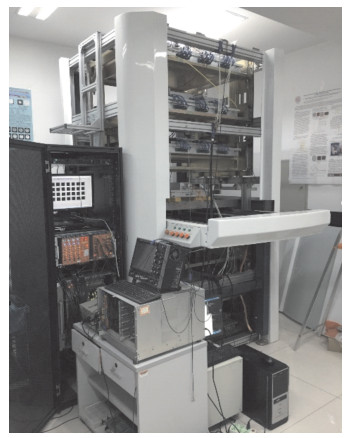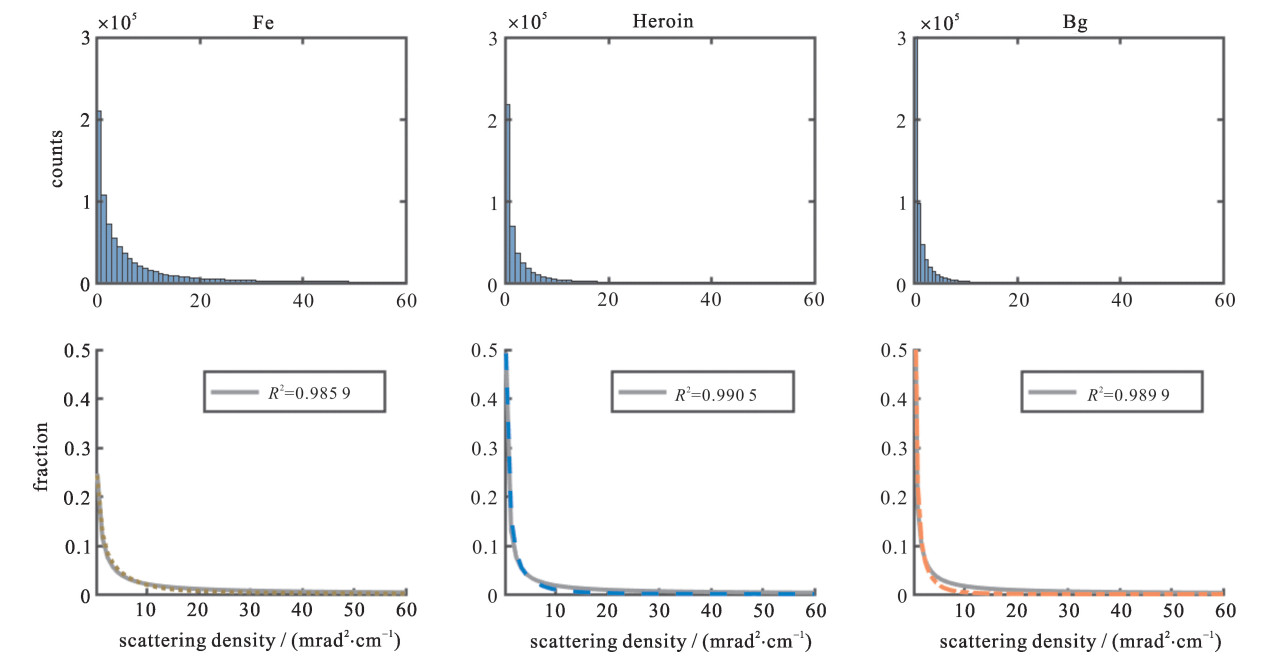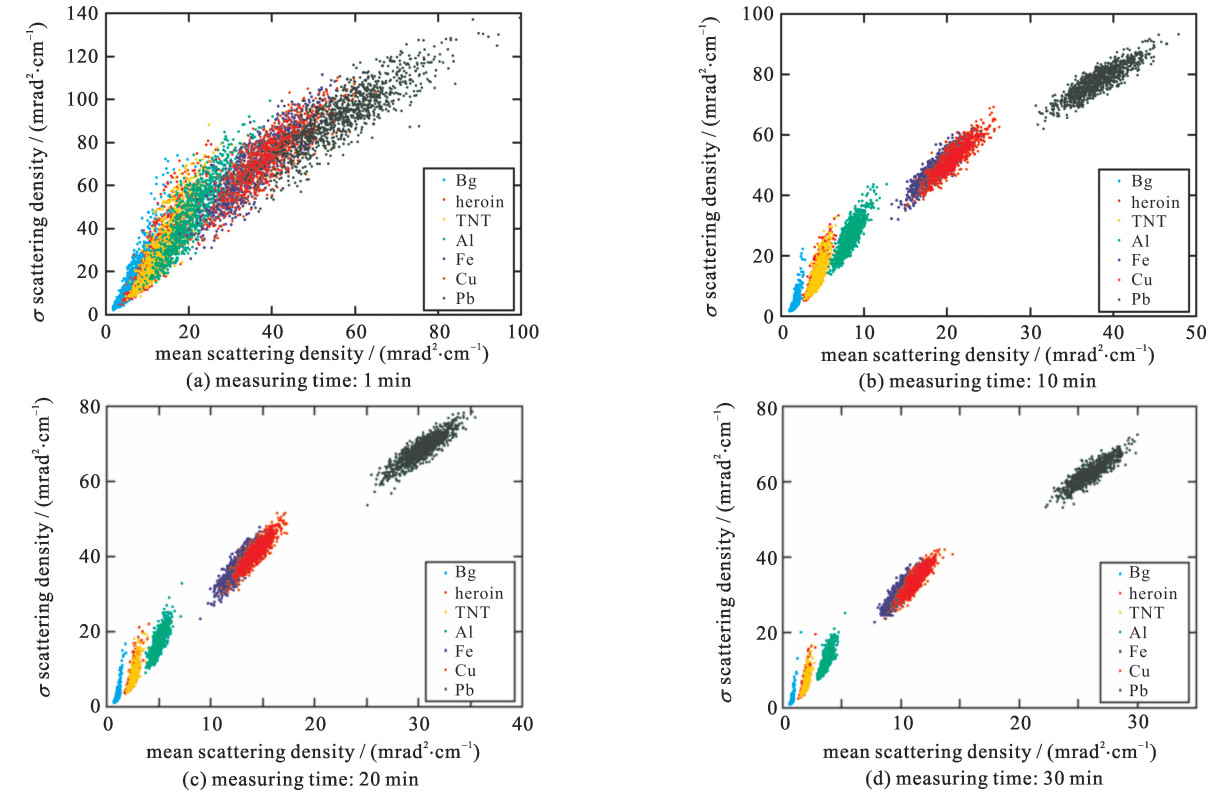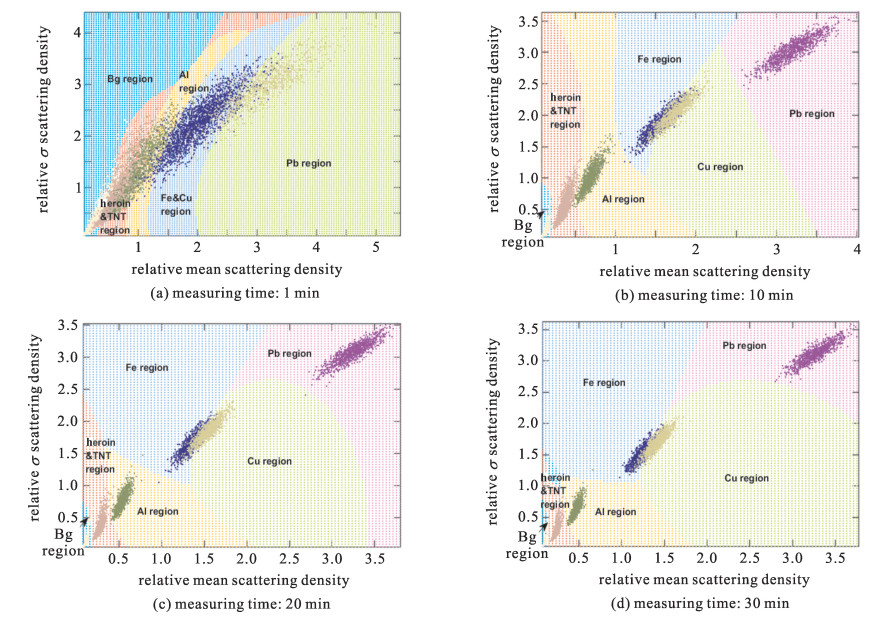Discrimination of drugs and explosives in cargo inspections byapplyingmachine learningin muon tomography
-
摘要: 在集装箱安检中一个很重要的亟待解决的问题是如何有效地检测出藏在金属中的毒品和爆炸物。传统的X射线CT难以穿透较厚的金属材料,而中子CT引入了很大的放射性,其屏蔽问题是一个难点。相较之下,宇宙线缪子成像是一种有前景的非破坏性成像技术,因为缪子来源于天然的宇宙射线且有足够的能量完全穿透大型集装箱。本文研究了在可接受的测量时间内,宇宙线缪子成像方法能够在何种程度上识别毒品爆炸物与空气和金属。基于清华大学缪子实验平台TUMUTY并通过Geant4模拟宇宙线缪子与物质的相互作用,毒品爆炸物及不同金属材料的散射密度能够被重建出来。基于模式识别的SVM分类器被训练出来对这些材料进行自动识别分类。结果显示,对于边长为20 cm的不同材料的物块,在10到30 min的测量时间内,能够通过缪子成像方法识别毒品爆炸物与金属材料和本底,分类的错误率约为1%;测量时间为1 min时,分类的错误率恶化为12.9%。Abstract: A previously under-explored difficulty in cargo inspections is how to efficiently detect drugs and explosives concealed in large dense metals.Cosmic ray muon tomography is a promising non-destructive imaging technique to solve the problem because muons are naturally generated in the atmosphere and have sufficient energy to completely penetrate large dense containers.In this work it is investigated that to what extent drugs and explosives of a certain size could be discriminated from air background and metals by muon tomography within acceptable measuring time.A Geant4 Monte Carlo simulation is built based on the Tsinghua University MUon Tomography facility (TUMUTY) and a support vector machine (SVM) classifier based on machine learning is trained to differentiate drugs and explosives from air background and metals automatically.For various 20 cm×20 cm×20 cm objects, with 10 min to 30 min measuring time, drugs and explosives could be discriminated from background and metals by muon tomography with an error rate of about 1%.With 1 min, the error rate deteriorates to 12.9%.
-
Key words:
- muon tomography /
- scattering density /
- drugs and explosives /
- machine learning
-
Figure 4. Scattering density distributions for heroin, Fe and background. The upper row is the result of 1000 times independent simulations with 10 min measuring time. The lower row is the corresponding probability density distribution, fitted by the simple rational function of $f(x) = \frac{p}{{x + q}}$
Figure 6. Classification results by training SVM classifiers based on Fig. 5. After whitening transformation (here the mean vector and the standard deviation vector are divided by its corresponding variance to be decorrelated), the mean and the standard deviations of scattering density in Fig. 5 become the relative mean and the relative standard deviations
Table 1. Error rate for misclassification by means of 2-fold cross-validation. With 10 min to 30 min, Fe and Cu are classified as 2 types of materials. But with 1 min, Fe and Cu couldn't be differentiated and are regarded as one type of material
measuring time/min mean error rate/% Bg heroin & TNT Al Fe Cu Pb 30 0 1.3 0 3.3 3.2 0 20 0 1.1 0.1 4.0 4.1 0 10 0 1.3 0.2 6.0 5.7 0 1 6.3 12.9 8.0 5.6(Fe & Cu) 3.5 -
[1] Decker S H, Chapman M T. Drug smugglers on drug smuggling: Lessons from the inside[M]. Pennsylvania: Temple University Press, 2008. [2] Zentai G. X-ray imaging for homeland security[J]. International Journal of Signal and Imaging Systems Engineering, 2010, 3(1): 13-20. doi: 10.1504/IJSISE.2010.034628 [3] Kiraly B, Olah L, Csikai J. Neutron-based techniques for detection of explosives and drugs[J]. Radiation Physics and Chemistry, 2001, 61(3/6): 781-784. [4] Procureur S. Muon imaging: Principles, technologies and applications[J]. Nuclear Instruments and Methods in Physics Research Section A: Accelerators, Spectrometers, Detectors and Associated Equipment, 2018, 878: 169-179. [5] Chatzidakis S, Choi C K, Tsoukalas L H. Interaction of cosmic ray muons with spent nuclear fuel dry casks and determination of lower detection limit[J]. Nuclear Instruments and Methods in Physics Research Section A: Accelerators, Spectrometers, Detectors and Associated Equipment, 2016, 828: 37-45. [6] Rossi B B. High-energy particles[M]. New York: Prentice-Hall, 1965. [7] He W, Xiao S, Shuai M, et al. A grey incidence algorithm to detect high-Z material using cosmic ray muons[J]. Journal of Instrumentation, 2017, 12(10): P10019. doi: 10.1088/1748-0221/12/10/P10019 [8] Blanpied G, Kumar S, Dorroh D, et al. Material discrimination using scattering and stopping of cosmic ray muons and electrons: Differentiating heavier from lighter metals as well as low-atomic weight materials[J]. Nuclear Instruments and Methods in Physics Research Section A: Accelerators, Spectrometers, Detectors and Associated Equipment, 2015, 784: 352-358. doi: 10.1016/j.nima.2014.11.027 [9] Wang X, Zeng M, Zeng Z, et al. The cosmic ray muon tomography facility based on large scale MRPC detectors[J]. Nuclear Instruments and Methods in Physics Research Section A: Accelerators, Spectrometers, Detectors and Associated Equipment, 2015, 784: 390-393. doi: 10.1016/j.nima.2015.01.024 [10] Hagmann C, Lange D, Wright D. Cosmic-ray shower generator (CRY) for Monte Carlo transport codes[C]//Nuclear Science Symposium Conference Record. 2007, 2: 1143-1146. [11] Nasrabadi N M. Pattern recognition and machine learning[J]. Journal of Electronic Imaging, 2007, 16: 049901. doi: 10.1117/1.2819119 -





 下载:
下载:






